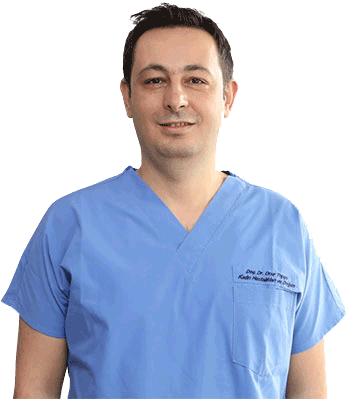
Prof. Dr. Onur Topçu
Gynecology and Obstetrics Specialist
Endometriosis and Chocolate Cyst
Endometriosis is one of the gynecological diseases that I am most interested in, conduct research on, and organize conferences about. I have devoted considerable effort to increasing awareness of Endometriosis in our country. I established the first center in Turkey dedicated solely to patients with Endometriosis and Chronic Pelvic Pain at Zekai Tahir Burak Women’s Health Education and Research Hospital in 2017, and I served as its director until 2019. From April 2019 to November 2020, I worked at Ankara Memorial Hospital. Since November 2020, I have been seeing patients with Endometriosis from all over Turkey at our clinic in Ankara and providing treatment.
(Milliyet Newspaper: Endometriosis Clinic Opened in Ankara)
During that time, I conducted investigations, treatments, and surgeries for hundreds of Endometriosis patients. The most significant motivation for me to establish this center was observing that Endometriosis patients were quite neglected and ensuring that advanced surgical procedures required for Endometriosis surgery were performed optimally.
I have contributed to raising awareness of this disease by organizing many social responsibility projects and training programs, not only in the community but also among healthcare professionals, as there is a lack of awareness of this disease among them.
The most well-known form of Endometriosis in the public is known as an endometrioma, also referred to as a chocolate cyst. In fact, chocolate cysts are the form of Endometriosis that occurs on the ovaries. The difference between chocolate cysts and other forms of Endometriosis is that chocolate cysts can reduce ovarian reserve. The diagnosis of Endometriosis in women is usually made by detecting these cysts through ultrasound. Endometriomas (chocolate cysts) can be easily recognized by ultrasound because they exhibit typical images.
However, Endometriosis can affect any organ in the body. Below, I have prepared informative articles about the organs most commonly infiltrated by Endometriosis. If you want to learn more about Endometriosis, you can read the articles I mentioned below.
Stay healthy…
The name of the disease Endometriosis originates from the combination of “endometrium,” which is the name of the innermost lining of the uterus, and the Latin word “esis,” meaning similar or arising from. Endometriosis signifies tissue that resembles or arises from the endometrium. According to the Sampson theory, the disease occurs when endometrial cells shed during menstruation flow backward into the pelvic cavity, survive, and induce changes, resulting in the formation of tissue similar to endometrium.
The primary nutrient source for the ectopic endometrial tissue that causes Endometriosis is estrogen, the female hormone. Estrogen secretion begins after the first menstrual cycle and significantly decreases during menopause. Consequently, Endometriosis is most commonly observed during the reproductive years, when estrogen levels are high. It is one of the frequent diseases in women of reproductive age, affecting approximately one in every ten women.
The most common initial symptom of Endometriosis is dysmenorrhea, or menstrual pain, in women. Ignoring menstrual pain as normal and not consulting a gynecologist can lead to delayed diagnosis of Endometriosis. Studies have found that the diagnosis of Endometriosis is delayed by 7 to 10 years worldwide.
Endometriosis may initially manifest only as menstrual pain but can progress to severe pelvic pain outside the menstrual period. In advanced stages, it can cause pain during sexual intercourse, urination, and defecation. Pain associated with Endometriosis can be so severe that it is mistaken for acute appendicitis, leading many patients to undergo appendectomy.
Unfortunately, Endometriosis can also lead to infertility in addition to pain. Although the exact mechanisms causing infertility are not fully understood, it is assumed that inflammation, chocolate cysts, and adhesions associated with Endometriosis may contribute to infertility.
There is insufficient evidence to explain why Endometriosis occurs in some women and not in others. Even in identical twins, if one twin has Endometriosis, there is a 52% chance that the other twin will also have the disease. This indicates that genetic predisposition is just one of many factors contributing to the development of Endometriosis.
Treatment of Endometriosis
I always give my patients with Endometriosis the following analogy: just as diabetes or hypertension cannot be cured by medication alone but can be managed as long as medication is used, Endometriosis and the medications used to treat it have similar characteristics. Understanding this fact is beneficial for disease management, treatment, and surgical interventions.
Since every patient with Endometriosis has different symptoms, expectations, age, ovarian reserve, desire for children, and severity of pain, treatment for Endometriosis must be individualized. Patients with Endometriosis should be followed and treated by experienced healthcare professionals, taking into account their unique circumstances.








